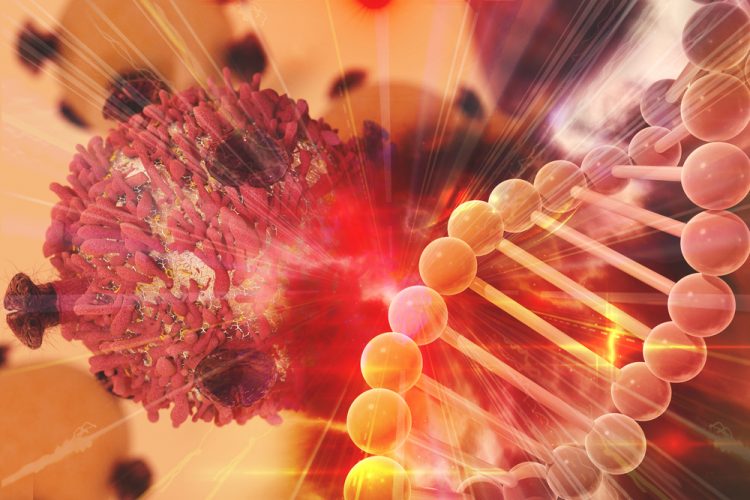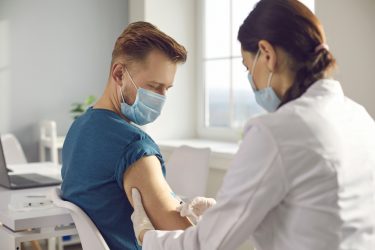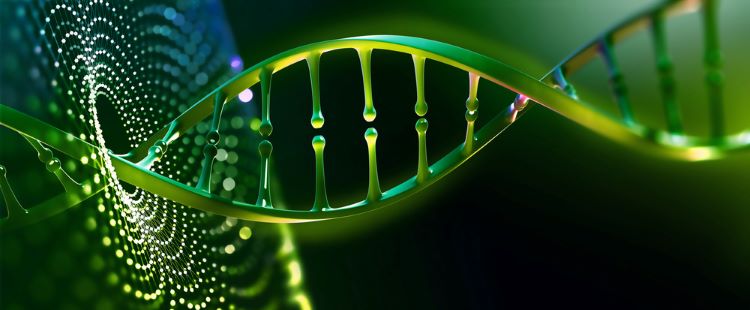Early phase CGT trials: key design elements correlating to distinctive biological characteristics
Posted: 31 May 2022 | Dave Li MD PhD (KCR Consulting), Dr Anna Baran (KCR Consulting) | No comments yet
With increasing numbers of cell and gene therapies (CGTs) entering clinical trials, Dr Dave Li and Dr Anna Baran of KCR Consulting discuss how the biological characteristics of CGTs should be taken into account with early phase trial designs.


Introduction
Over the past few decades, we have witnessed significant progress in biological sciences with the introduction of innovative cell and gene therapeutic (CGT) agents into patient care for rare diseases. As a result of these powerful biotechnologies, we now have tools such as gene-modified cells or gene editing at our disposal to help treat some previously incurable human diseases, for instance, chimeric antigen receptor T cells (CAR-T) and bi-specific T-cell engagers (BiTE) for treating leukaemia and lymphoma, as well as gene editing methods to correct congenital genetic abnormalities in certain rare diseases.1,2
The objective of the early phase clinical study is to determine the safety of CGTs, which are non-traditional, advanced medicinal products.3 They differ from small or large molecules in terms of biological characteristics, pharmacokinetics and pharmacodynamics; notably, they may not follow the classical patterns of first-order model of kinetics in absorption, distribution, metabolism and excretion (ADME). Instead, the genetic therapeutic substance and the functional cellular components of CGTs interact specifically with constituents of tissue and organ systems to maintain homeostasis in human physiology.4,5
Small molecule drugs that are purely chemical in nature and large molecules such as polypeptides exert agonistic or antagonist effects through direct target interactions. In contrast, CGTs tend to exert their effects by binding with cellular components of the human host systems and forming a functional molecular complex, for example, binding to cell surface receptors triggering corresponding intracellular signalling for downstream responses in the body’s innate and adaptive immunity, or by integrating DNA constructs – altering the genomic structure for therapeutic effects.


Despite their potential, innovative therapeutics can pose substantial risks to human subjects in clinical trials, a threat that can be compounded if the physicians and study personnel have limited experience in these novel treatment modalities. The near-term risks can derive from the immunogenicity of the biologic agents or pre-existing anti-viral antibodies in trial subjects and, in the longer-term, risks include potential downstream effects from genome insertions and continuing migration and differentiations of stem cells after transplantation, among others. CGT products also require more invasive procedures for delivery, which may demand collective skill sets and collaboration of different teams to conduct clinical studies. An example is the imaging guided intra-tumoural injection of oncolytic viruses. These distinctive features can all affect early phase study designs.6-8
It has become increasingly clear that the current clinical development model for traditional small and large molecule drugs is outdated when considering CGTs’ inherent biological behaviours and their unpredictable patterns of interaction with human host systems. This calls for innovative thinking in clinical trial designs and approaches. Moreover, design elements for aspects associated with the physiological and biological characteristics of CGTs should be meticulously considered.
Here, we briefly discuss some important clinical study design features for CGTs, largely based on our own experience and, where possible, referenced to some recent publications in the areas of clinical development.9-14
Design elements in correlation with CGTs’ biological characteristics for protocol development
There are some unique features or potential barriers in the clinical development of CGT therapeutics due to their distinctive biological characteristics and unique modes of action. As alluded to previously, CGT medicinal products are mostly not naturally occurring, with biologically engineered structural modifications intended to enhance either their biological functions and/or improve their toxicity profiles or attenuate virulence for therapeutic applications. Therefore, to demonstrate their safety and efficacy, early study designs must consider the biological characteristics associated with their nature of origin, as well as subsequent manipulations by laboratory engineering methods in the context of the clinical intentions.
Natural history and existing treatment options
CGT has come of age with the development of advanced biotechnologies such as genetic and cellular engineering, and synthetic biology. In recent years natural and biological source materials have been increasingly utilised and modified for therapeutic applications in humans that may have lacked treatment options in the past. This is particularly true for inherited disorders and some rare diseases with insidious onset, for which CGTs are now developed to manage or even cure.
disease or patient registries could be useful for developing practical study protocols by not only helping to justify the study length and timing of assessments, but also serving as a control arm for the rare disease currently lacking medical treatment options”
In indications lacking effective treatments, the natural history of disease is often poorly understood. This poses a challenge to CGT study design since the study timeframe for outcome observation is uncertain. The aetiology and pathophysiological process is usually multi-factorial in these diseases, while clinical trials are usually constricted by time and resources.
A further significant barrier to study design, in terms of assessing efficacy, is when a rare disease has no available treatment. Though early phase studies are primarily safety oriented, indications of efficacy are often endpoints. If a rare disease has no available treatment, there would be no readily available comparator against which to judge treatment efficacy and, therefore, the trial would likely need to rely on a natural history database or patient registry datasets.
It has been suggested that disease or patient registries could be useful for developing practical study protocols by not only helping to justify the study length and timing of assessments, but also serving as a control arm for the rare disease currently lacking medical treatment options. Therefore, every effort should be made to locate the relevant patient registry for CGT clinical trials to facilitate the construction of a conceptual framework for the trial designs.
Case definition and patient selection
The study population should be well defined in advance, to either the genomic or phenotypic level or both. As rare disease is complex and could be insidious in process, perhaps with an unclear natural history, it can be difficult to recognise and identify those patients with targeted abnormalities.
For patient selection in CGT therapeutic studies, laboratory approaches with validated biochemical and molecular testing could extend the clinical presentations to further determine eligibility of the target and intended patient population for selection; this, in return, can also reduce the screen failure.
It has become increasingly clear that some human diseases share common mutations, such as epidermal growth factor receptor (EGFR) variations occurring in both lung and breast cancer, and phenotypes, for example, the U3 ubiquitin ligase in PD-L1 pathway is implicated in the pathogenesis of multiple myeloma and defects of T-cell activations in human malignancies. Disease classifications such as ICD-10 and clinical practice guidelines such as National Comprehensive Cancer Network (NCCN) are increasingly incorporating biochemical and molecular markers to refine the subtle differences between disease subtypes or offer some insight to allow for the grouping of certain disease states at different stages as the same disease process. We cannot emphasise enough the importance of using all available clinical and laboratory means to carefully qualify and vet eligible trial participants based on their disease stages and severities for CGT clinical trials.


The case definition for the study population should be defined by appropriate means for early phase clinical trials. In general, the common practice of enrolling healthy volunteers for first-in-human studies may be inappropriate because of ethical concerns if the risk associated with the CGT products is high versus the potential benefits.
Patient selections for CGTs should be based on stage of the disease and severity, and conducted through a random process, according to the pre-defined disease definition. This means all patients who meet the disease definition in a population pool of a geographical area should have equal opportunity to be enrolled and assigned, provided the potential benefits of the CGT under trial are greater than the potential risks. Cross-over designs could be useful in rare disease if eligible patients are limited and the initial results of the treatment cohort are encouraging.15
Safety and efficacy endpoint
The objective of the early phase CGT study is safety. Establishing the minimum tolerable dose (MTD) and recommended Phase II dose (RP2D) should be the primary endpoints for early phase CGT studies. The safety endpoints are usually the same as other standard small and large molecule pharmaceuticals, ie, dose-limiting toxicities (DLTs) presenting as adverse events.
clinical study is not medical practice; some of the commonly used clinical endpoints, such as a purely subjective scoring system, may not be appropriate for CGT clinical trial purposes”
The efficacy endpoint should be considered in the context of the overall clinical development programme, according to the US Food and Drug Administration (FDA). Establishing these in the context of complex diseases with mutually interactive etiological factors is typically a long process in the absence of easily recognisable pre-clinical and clinical history. To establish a valid, reliable, observable and evaluable primary endpoint either as a composite or surrogate endpoint is imperative.
However, it must be acknowledged that clinical study is not medical practice; some of the commonly used clinical endpoints, such as a purely subjective scoring system, may not be appropriate for CGT clinical trial purposes since other activity assessments may be needed for ascertaining the study outcomes. These activity assessments may include measuring gene expression, cell engraftments, or morphological, dimensional and other physiological changes. In these instances, the best approach moving forward should be to consult with the FDA or European Medicines Agency (EMA) directly and work collaboratively, taking advantage of the early interactive mechanisms set up by these regulatory authorities. Concurrence from the regulatory agency on efficacy outcomes for a study is important and reassuring, as these exploratory endpoints can facilitate seamless transition between the different phases of clinical development.
Evaluation of MTD for dose regimen and follow-up
Gene therapy, unlike other standard small and large molecule treatment modalities, has a set of different design elements, including active principle, dose, purity, strength, toxicity, biodistribution, shedding, environmental risk, pharmacokinetics and pharmacodynamics, route of administrations and host response. It likely has an unknown or unpredictable risk profile. On the other hand, the toxicity might also be relatively mild within a biologically active dose range, due to unclear dose-response relationships and ambiguous presentations of DLTs that can be used for the identification of the MTD. In these cases, the maximum administered dose (MAD) within the target range of exposures could be considered as the study endpoint. Alternatively, the maximum feasible dose with an acceptable safety profile could also be appropriate. However, the study endpoints and observation period should be well defined in advance.
CGT agents are likely to induce a response from human body systems, either in organs and tissues, incurring therapeutic efficacy, or through virulence or toxicity. In contrast to other standard therapeutics, the treatment effectiveness and the toxicities presented as adverse events, either systemically or locally, may take a longer time to manifest in clinical settings and may also be dependent on the individual’s genetic background and past medical history. As a result, a longer-term observation period could be necessary for DLT and MTD in CGT studies. In general, at least a three- to four-week or longer DLT observation period is required, compared to the two-week DLT period for standard treatment approaches. A longer-term safety follow-up of one year or more is also usually desirable.3,16 Again, we suggest and urge sponsors to reach out to the regulatory authorities early for their advice before finalising study plans for CGTs.
Mitigation plan for potential toxicity and adverse events
The toxicity profiles from the biological responses to a foreign substance could be more harmful and relatively long lasting than those that occur with existing small and large molecule treatments”
The treatment options for rare diseases are largely limited before CGTs become widely available. While these innovative treatment modalities are revolutionising clinical management and may eventually offer a cure for rare human illnesses, this will likely be a long journey given the complexity of these conditions. Any CGT, gene and cell alike, will likely cause unanticipated adverse events during clinical trials, aggravating the pains and enduring experience of the illness.
The toxicity profiles from the biological responses to a foreign substance could be more harmful and relatively long lasting than those that occur with existing small and large molecule treatments. Therefore, sponsors will need to carefully assess the potential benefits versus risks associated with CGTs, and use data from pre-clinical models or similar clinical experience to develop an effective mitigation plan for potential toxicity, especially when an alternative treatment option is not available for the medical conditions.9 The planning should also include effective communications and timely reporting mechanisms.
Conclusions
CGT therapeutic products have distinctive biological characteristics, with therapeutic mechanisms of action likely to involve host immune responses and/or downstream effects from possible changes to the human genome or proteome. The clinical development of CGTs designed for rare disease are more complicated than that of standard small and large molecule agents. In designing studies, we must be mindful of the biological features of CGTs, not simply consider them as classical chemical compounds, and focus on the systemic interactions and incurred host responses for evidentiary benefits in the context of acceptable risk profiling.
About the authors


Dave Li, MD, PhD is the Principal Consultant of Trial Execution Consulting at KCR. As a medical oncologist, Dave is an expert in organising, monitoring and reviewing oncology clinical trials and has in-depth training and extensive experience at FDA, MD Anderson Cancer Center, Johns Hopkins and Takeda Pharmaceuticals. He has spent more than five years as a consultant and is skilled in data analytics, molecular medicine, immune-oncology, clinical informatics and regulatory science.


Anna Baran, MD is the Chief Medical Officer at KCR and oversees all stages of clinical trial operations of Trial Execution services. She brings expert clinical and medical experience to KCR, having conducted research for pre-clinical and clinical projects for many years, working as a sub-investigator on endocrinology and dermatology therapies, and holding drug development consultant positions. Anna holds a medical degree and a post-graduate degree in healthcare management.
References
- Lapteva L, Purohit-Sheth T, Serabian M, et al. Clinical Development of Gene Therapies: The First Three Decades and Counting. Mol Ther Methods Clin Dev. 2020 Oct 10; 19:387-397.
- Iglesias-Lopez C, Agustí A, Vallano A, et al. Current landscape of clinical development and approval of advanced therapies. Mol Ther Methods Clin Dev. 2021 Nov 11; 23:606-618.
- Considerations for the Design of Early-Phase Clinical Trials of Cellular and Gene Therapy Products Guidance for Industry, JUNE 2015 https://www.fda.gov/regulatory-information/search…
- Parra-Guillén ZP, González-Aseguinolaza G, Berraondo P, et al. Gene therapy: a pharmacokinetic/pharmacodynamic modelling overview. Pharm Res. 2010 Aug;27(8):1487-97.
- Banks G. Dose Selection for Cellular and Gene Therapies. April 10, 2019. https://www.nuventra.com/resources/blog/cellular-gene-therapies-finding-the-right-dose
- Human Gene Therapy for Rare Diseases Guidance for Industry. JANUARY 2020. https://www.fda.gov/regulatory-information/search-fda-guidance-documents…
- European Medicines Agency (EMA) Committee for Advanced Therapies (CAT). Guideline on quality, non-clinical and clinical requirements for investigational advanced therapy medicinal products in clinical trials. 31 January 2019 EMA/CAT/852602/2018 https://www.ema.europa.eu/en/guideline…
- European Medicines Agency (EMA). Guideline on Human Cell-based Medicinal Products. London, 21 May 2008 Doc. Ref. EMEA/CHMP/410869/2006 https://www.ema.europa.eu/en/human…
- Kefalopoulou Z, Aviles-Olmos I, Foltynie T. Critical aspects of clinical trial design for novel cell and gene therapies. Parkinson’s Dis. 2011. 2011:804041.
- National Academies of Sciences, Engineering, and Medicine 2020. Exploring Novel Clinical Trial Designs for Gene-Based Therapies: Proceedings of a Workshop. Washington, DC: The National Academies Press. https://doi.org/10.17226/25712.
- Dasgupta A, Herzegh K, Spencer HT, et al. Regulatory Framework for Academic Investigator-Sponsored Investigational New Drug Development of Cell and Gene Therapies in the USA. Curr Stem Cell Rep. 2021;7(4):129-139.
- Exley AR, Rantell K, McBlane J. Clinical development of cell therapies for cancer: The regulators’ perspective. Eur J Cancer. 2020 Oct; 138:41-53.
- Iglesias-Lopez C, Agustí A, Vallano A, et al. Methodological Characteristics of Clinical Trials Supporting the Marketing Authorisation of Advanced Therapies in the European Union. Front Pharmacol. 2021 Nov 29; 12:773712.
- Iglesias-Lopez C, Agustí A, Vallano A, et al. Methodological Characteristics of Clinical Trials Supporting the Marketing Authorisation of Advanced Therapies in the European Union. Front Pharmacol. 2021 Nov 29; 12:773712.
- Hilgers RD, König F, Molenberghs G, et al. Design and analysis of clinical trials for small rare disease populations. J Rare Dis Res Treat. (2016) 1(3): 53-60.
- Long Term Follow-up After Administration of Human Gene Therapy Products Guidance for Industry. JANUARY 2020 https://www.fda.gov/regulatory-information/search-fda-guidance…
Related topics
Anti-Cancer Therapeutics, Biologics, Clinical Development, Clinical Trials, Drug Development, Drug Safety, Gene therapy, Industry Insight, Research & Development (R&D), Therapeutics
Related organisations
The European Medicines Agency (EMA), US Food and Drug Administration (FDA)
Related drugs
Related diseases & conditions
Breast cancer, Leukaemia, Lung cancer, Lymphoma, Multiple myeloma









